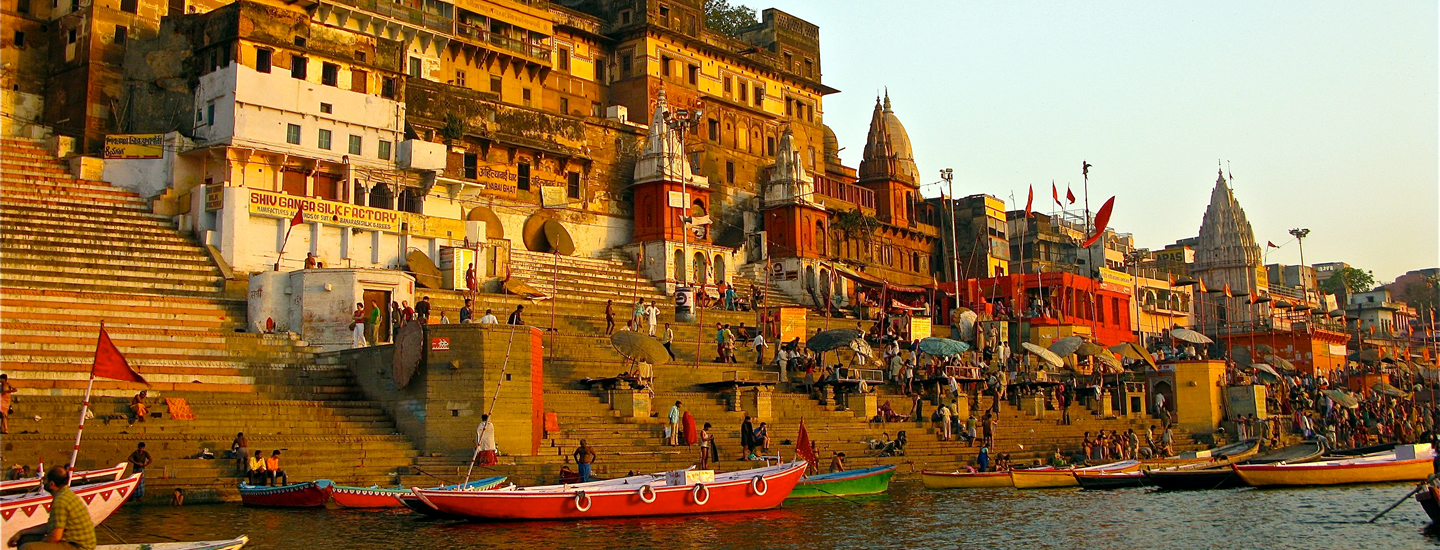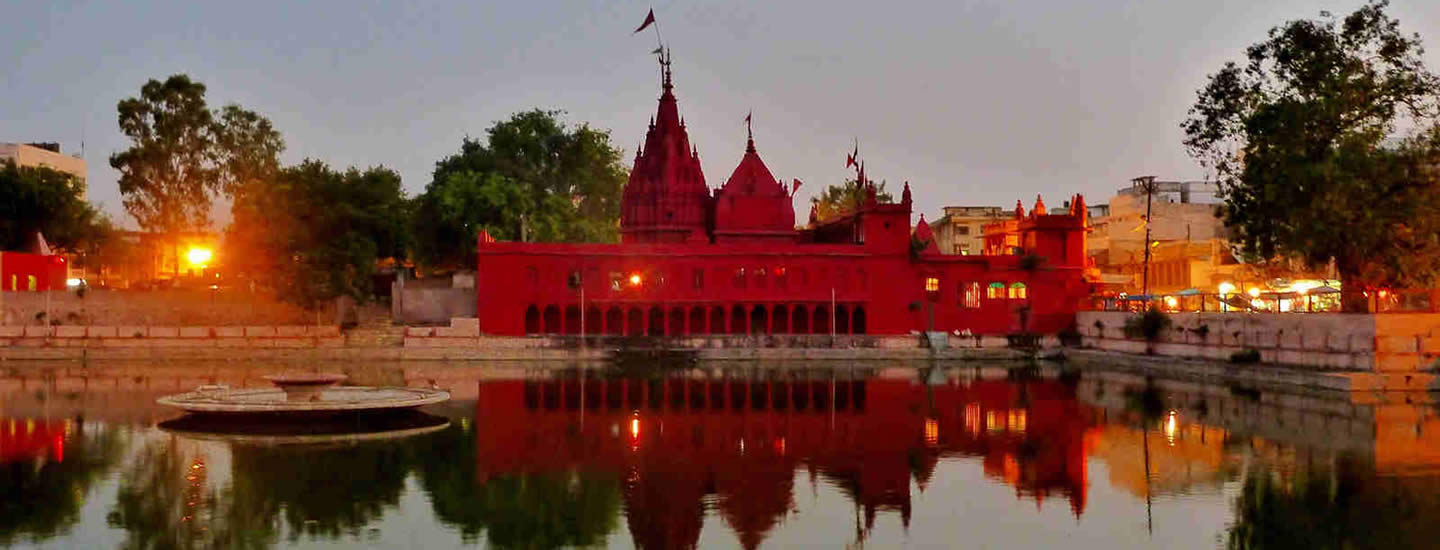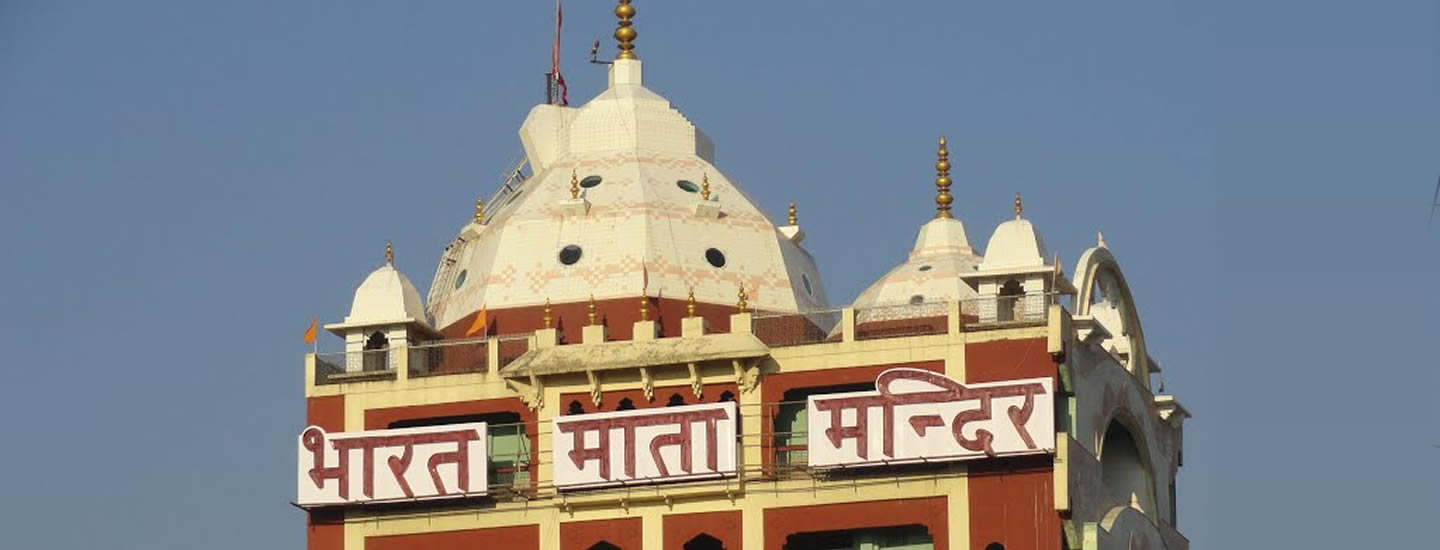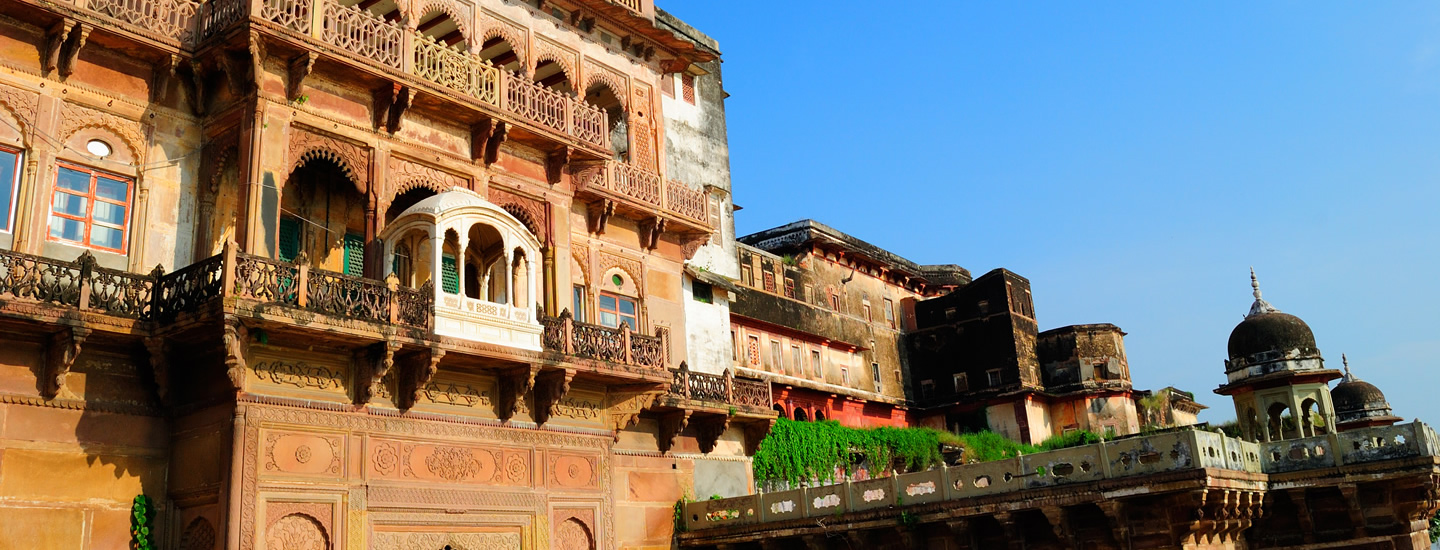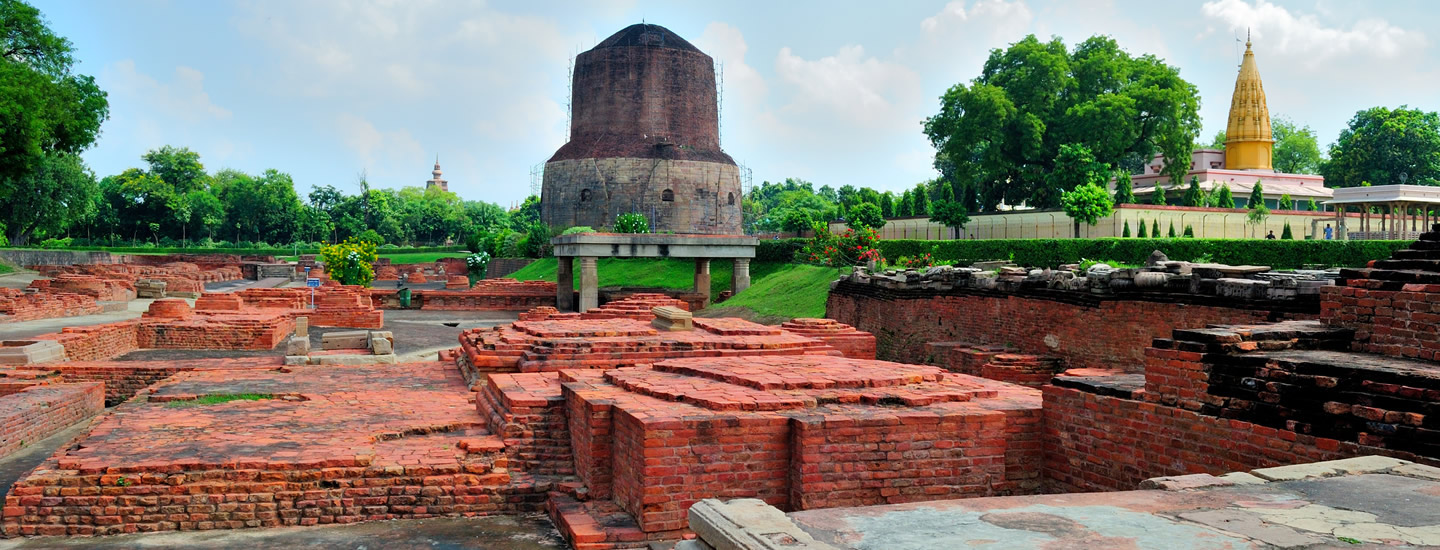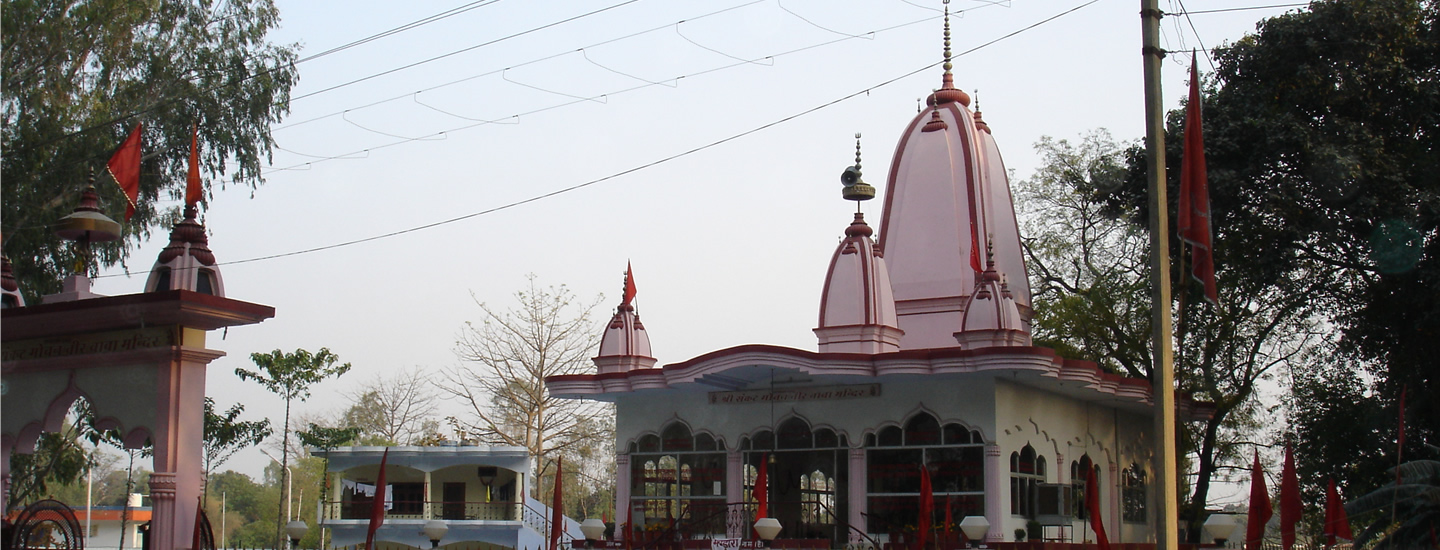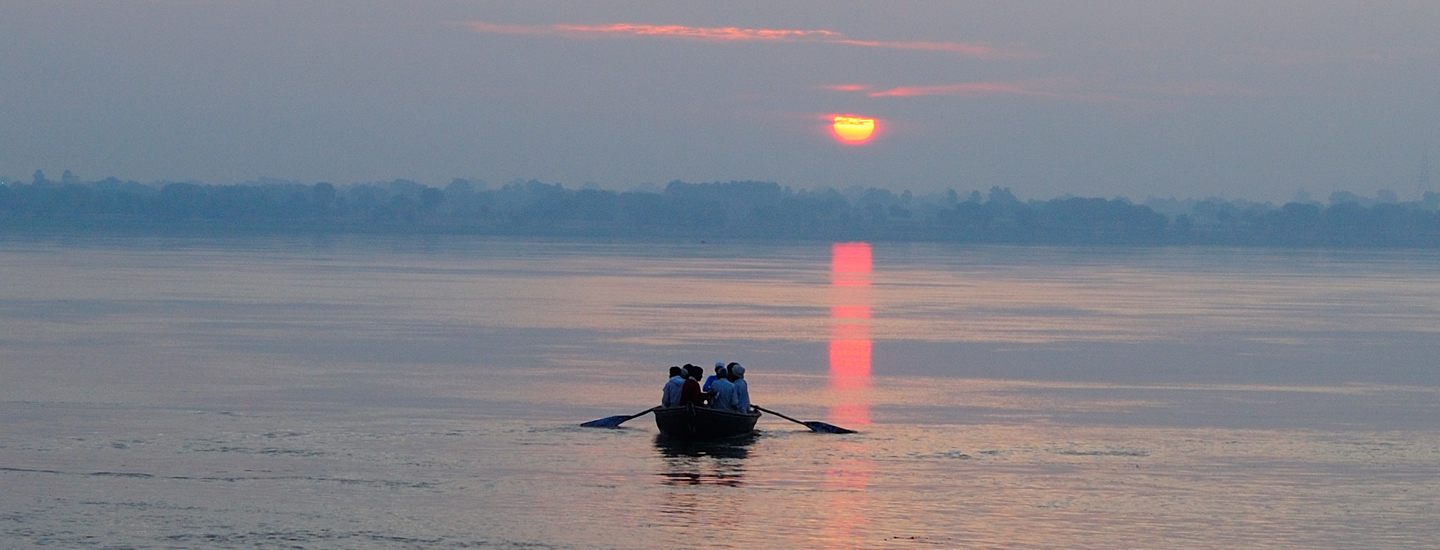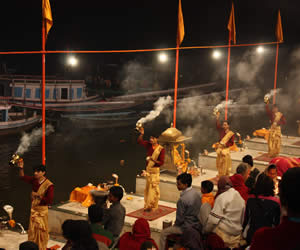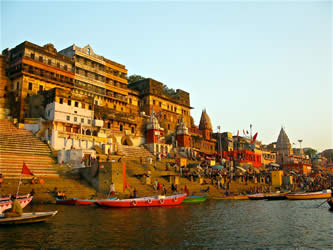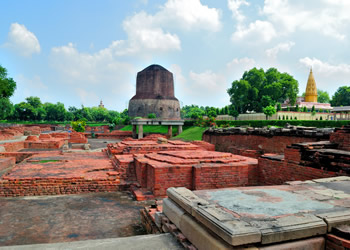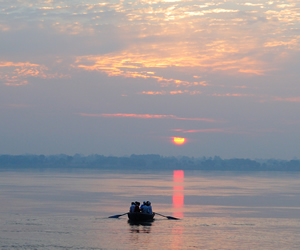In & Around Varanasi
Location Attractions
| Dasaswamedh Ghat | Durga Mata Temple |
| Sarnath | Sankat Mochan |
| Ramnagar fort | Kashi Vishwanath Temple |
| Bharat Mata temple | Sarnath Museum |
| Ashoka Lion Capital |
The land of Varanasi (Kashi) has been the ultimate pilgrimage spot for Hindus for ages. Often referred to as Benares, Varanasi is the oldest living city in the world. These few lines by Mark Twain say it all: “Benaras is older than history, older than tradition, older even than legend and looks twice as old as all of them put together”. Hindus believe that one who is graced to die on the land of Varanasi would attain salvation and freedom from the cycle of birth and re-birth. Abode of Lord Shiva and Parvati, the origins of Varanasi are yet unknown. Ganges in Varanasi is believed to have the power to wash away the sins of mortals.
Ganges is said to have its origins in the tresses of Lord Shiva and in Varanasi, it expands to the mighty river that we know of. The city is a center of learning and civilization for over 3000 years. With Sarnath, the place where Buddha preached his first sermon after enlightenment, just 10 km away, Varanasi has been a symbol of Hindu renaissance. Knowledge, philosophy, culture, devotion to Gods, Indian arts and crafts have all flourished here for centuries. Also a pilgrimage place for Jains, Varanasi is believed to be the birthplace of Parsvanath, the twenty-third Tirthankar.
Vaishnavism and Shaivism have co-existed in Varanasi harmoniously. With a number of temples, Mrs. Annie Besant chose Varanasi as the home for her ‘Theosophical Society’ and Pandit Madan Mohan Malviya, chose Varanasi for the institute ‘Benares Hindu University, the biggest University in Asia. Ayurveda is said to be originated at Varanasi and is believed to be the basis of modern medical sciences such as plastic surgery, cataract and calculus operations. Maharshi Patanjali, the preceptor of Ayurveda and Yoga, was also affiliated with Varanasi, the holy city. Varanasi is also famous for its trade and commerce, especially for the finest silks and gold and silver brocades, since the early days.
Varanasi has also been a great center of learning for ages. The city is associated with the promotion of spiritualism, mysticism, Sanskrit, yoga and Hindi language and has been an abode for the honored authors such as the ever-famous novelist Prem Chand and Tulsi Das, the famous saint-poet who wrote Ram Charit Manas. Aptly called as the cultural capital of India, Varanasi has provided the right platform for all cultural activities to flourish. Many exponents of dance and music have come from Varanasi. Pandit Ravi Shankar, the internationally renowned Sitar maestro and Ustad Bismillah Khan, (the famous Shehnai player) are all sons of the blessed city or have lived here for major part of their lives.
Dasaswamedh Ghat
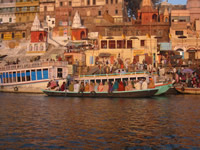 Dasaswamedh Ghat is one of the most important Ghats of Varanasi. Dasaswamedh literally means the Ghat (river front) of ten sacrificed horses. According to legends, ten horses were sacrificed by Lord Brahma to allow Lord Shiva to return from a period of banishment. In spite of the fact that Dasaswamedh is one of the oldest Ghats of Varanasi, dating back to many thousand years, the Ghat has remained unspoilt and clean. Dasaswamedh provides a beautiful and colorful riverfront view. A large number of Sadhus can be seen performing religious rites on this Ghat. Devotees must not miss the opportunity of visiting the Dasaswamedh Ghat in the evening when after Aarti, thousands of earthen lamps are immersed in the waters of the holy Ganges and the floating lamps give a divine look to the river at dusk.
Dasaswamedh Ghat is one of the most important Ghats of Varanasi. Dasaswamedh literally means the Ghat (river front) of ten sacrificed horses. According to legends, ten horses were sacrificed by Lord Brahma to allow Lord Shiva to return from a period of banishment. In spite of the fact that Dasaswamedh is one of the oldest Ghats of Varanasi, dating back to many thousand years, the Ghat has remained unspoilt and clean. Dasaswamedh provides a beautiful and colorful riverfront view. A large number of Sadhus can be seen performing religious rites on this Ghat. Devotees must not miss the opportunity of visiting the Dasaswamedh Ghat in the evening when after Aarti, thousands of earthen lamps are immersed in the waters of the holy Ganges and the floating lamps give a divine look to the river at dusk.
Sarnath
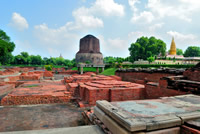
Sarnath, about 10 km from the holy city of Varanasi, is the place where Buddha chose to deliver his first sermon. The celebrated Mantra, ‘Buddham Sharanam Gachhami’, owes its origin to Sarnath. On the day before his death, Buddha included Sarnath along with Lumbini, Bodh Gaya and Kushinagar as the four places he thought to be sacred to his followers. It makes Sarnath one of the most venerated Buddhist places. Besides Buddhism, Sarnath is also connected with Jainism.
There are many Buddhist monuments and edifices in Sarnath. Some of the important Buddhist monuments at Sarnath are the Dhamekha stupa, the Chaukhandi stupa and monasteries and temples of different schools of Buddhism from Japan, China, Thailand, Burma and others. The Indian Buddhist society called Mahabodhi Society maintains a park around the Buddha temple. The Mahabodhi Temple within the park has a tooth relic of the Buddha. There is also a vast expanse of ancient ruins at Sarnath. Several Buddhist structures were raised at Sarnath between the 3rd century BC and the 11th century AD, and today it presents the most expansive ruins amongst places on the Buddhist trail. The Ashoka pillar of Sarnath is the National emblem of India.
Ramnagar fort
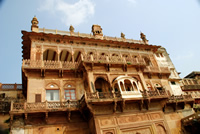
The Ramnagar fort lies about 14 km. from Varanasi and is situated on the opposite bank of river Ganga. It is the ancestral home of the Maharaja of Banaras. Maharaja Balwant Singh built this fort-palace in the eighteenth century. The fort is built in red sandstone. The Ramnagar fort has a temple and a museum within the grounds and the temple is dedicated to Ved Vyasa, who wrote Mahabharata, the great Indian epic. Legends have it that Ved Vyasa stayed here for a brief period.
The Ramnagar fort houses a museum displaying the Royal collection which includes vintage Cars, Royal palkies, an armory of swords and old guns, ivory work and antique clocks. The Durga Temple and Chhinnamastika Temple are also Located at Ramnagar. A temple of Dakshin Mukhi Hanuman is there. Inside the giant walls of the Ramnagar fort-palace, there is a big clock. This clock not only displays year, month, week and day but also astronomical facts about the sun, moon and constellation of stars. An interesting array of ornate palanquins, gold-plated howdahs and weapons are some of the artifacts on display in the Ramnagar fort-palace museum.
Bharat Mata temple
The Bharat Mata temple at Varanasi is the only temple dedicated to Mother India. It is located in the Mahatma Gandhi Kashi Vidyapeeth campus. The Bharat Mata temple was built by Babu Shiv Prasad Gupt and inaugurated by Mahatma Gandhi in 1936. The statute of Bharat Mata is built in marble and is a model of undivided India, depicting the mountains, plains and oceans. The most peculiar thing about the Bharat Mata Temple is that instead of the customary gods and goddesses, it houses a relief map of India, carved out of marble.
Durga Mata Temple
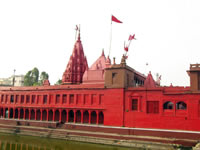
Durga temple, also known as the “monkey temple” is one of the important temples of Varanasi. This temple is dedicated to Goddess Durga. The Durga temple was built in the eighteenth century. A Bengali Maharani built the Durga temple in Nagara Style (the North Indian style of temple architecture). It is stained red with ochre and has a multi-tiered shikhara (spire). The Durga temple is situated on a rectangular tank, called the Durga Kund. According to the Puranas, Goddess Durga has kept this place for many centuries and protects the holy city, Varanasi, from the South.
According to legends, the present statue of Goddess Durga was not made by man but appeared on its own in the temple. The Durga temple is also called Monkey temple because of the presence of large number of monkeys. In Hinduism, Durga is represented as the embodiment of shakti or female power, clad in red, riding a tiger and fully armed with Shiva’s trident, Vishnu’s discus and a sword. Non-Hindus can enter the courtyard of the Durga temple but not the inner sanctum. Thousands of Hindu devotees visit the Durga temple during Navratri and other auspicious occasions.
Sankat Mochan

Sankat Mochan temple is one of the sacred temples of Varanasi. It is located in the southern part of Varanasi, near the Banaras Hindu University. It is dedicated to the Hindu God, Hanuman. The word “Sankat Mochan” means one who helps in removing sufferings i. e. Lord Hanuman. Tulsidas, the author of the famous Hindu epic Ramacharitamanasa, founded the Sankat Mochan temple. According to Hindu mythology, one who visits the Sankat Mochan temple regularly, his wishes get fulfilled.
Every Tuesday and Saturday, thousands of devotees queue up in front of the Sankat Mochan temple to offer prayers to Lord Hanuman. According to Vedic Astrology, Hanuman protects human beings from the anger of planet Saturn and those who have ill placed Saturn in their horoscope visit the Sankat Mochan temple to get remedy. People put “Sindoor” on the statue and offer “laddoos” to Lord Hanuman. The “Sindoor”, from the statue of Lord Hanuman is put on the foreheads of devotees.
Kashi Vishwanath Temple
The Kashi Vishwanath temple is located in the heart of the cultural capital of India, Varanasi. It stands on the western bank of India’s holiest river Ganges. The Kashi Vishwanath temple is the center of faith for millions of Hindus. The Jyotirlinga of Shiva, Vishweshwara or Vishwanatha, is enshrined in the Kashi Vishwanath temple, considered as one of the holiest temples of India. In Hindu religion it is believed that a simple glimpse of the Jyotirlinga is a soul-cleansing experience that transforms life and puts it on the path of knowledge and Bhakti (devotion). A single darshan of Vishweshwara Jyotirlinga is considered to merit more than the darshan of other jyotirlingas, scattered in various parts of India. The Kashi Vishwanath Temple has been a living picture of the timeless cultural traditions and highest spiritual values. The Kashi Vishwanath Temple attracts Hindu devotees and other visitors not only from India but also the world over. Lord Vishwanath is considered the supreme repository of the spiritual truth and strengthens the bonds of universal brotherhood. Late Maharani Ahilya Bai Holkar of Indore built the temple in the present shape, way back in 1780. In the year 1785, a Naubatkhana was built up in front of the Temple at the instance of Governor General, Warren Hastings. In 1839, two domes of the Temple were covered by gold, donated by Maharaja Ranjeet Singh, the ruler of Punjab. The management of the Kashi Vishwanath temple rests with a trust.
The Vishwanath temple opens daily at 2.30 A.M. for Mangala Aarti and between 3 to 4 A.M. ticket holders are permitted to join. The timing of general Darshan is from 4 to 11 A.M. The timing for midday Bhog Aarti is from11.30 to 12 A.M. Between 12 noon to 7 P.M., general devotees are free to have Darshan. From 7 to 8.30 P.M. the Sapta Rishi Aarati is held after which Darshan is possible again till 9 P.M. At 9 P.M. the Shringar/Bhog Aarati starts and after that Darshan is possible only from outside. Shayana Aarti starts at 10.30 P.M. and the temple closes at 11 P.M. Most of the offerings at the Kashi Vishwanath temple are given to poor.
Sarnath Museum
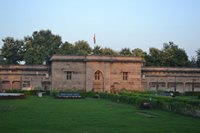
Sarnath has yielded a rich collection of sculptures, artifacts and edifices comprising numerous Buddha and Bodhisattva images and other ancient remains. To house all the findings and excavations at Sarnath, the Archaeological Survey of India established a site Museum at Sarnath. Finest specimens of Buddhist art and other important remains have been housed at the museum.
While the single most famous exhibit of this museum is the lion capital, the Sarnath museum has a small but awe-inspiring collection of Buddhist artifacts. Among the things to see is a beautiful sculpture of the Buddha from the fifth century. The Buddha sits cross-legged, with eyes downcast in deep meditation, and a halo around his head. Also worth exploring are several beautiful figures of the bodhisattvas.
Of other Buddhist remains there is an impressive and amazingly beautiful, life-size standing Bodhisattva and a delicate image of the Bodhisattva with a lotus and yet another bronze sculpture showing the Bodhisattva with multiple arms. The museum at Sarnath also houses an excellent collection of figures and sculptures from the Mauryan, the Kushana and the Gupta periods. Prominent of them is the earliest Buddha image found at Sarnath and many images of Hindu Gods dating from the 9th to 12th centuries.
The main attraction of the Sarnath Archaeological Museum is the superb Ashokan Pillar. It has four back-to-back lions, which has been adopted as the National symbol of India. Below this are representations of a lion, an elephant, horse and the bull.
Ashoka Lion Capital
The Ashoka Lion capital or the Sarnath lion capital is the national symbol of India. The Sarnath pillar bears one of the Edicts of Ashoka, an inscription against division within the Buddhist community, which reads, “No one shall cause division in the order of monks”. The Sarnath pillar is a column surmounted by a capital, which consists of a canopy representing an inverted bell-shaped lotus flower, a short cylindrical abacus with four 24-spoked Dharma wheels with four animals (an elephant, a bull, a horse, a lion).
The four animals in the Sarnath capital are believed to symbolize different steps of Lord Buddha’s life. The Elephant represents the Buddha’s idea in reference to the dream of Queen Maya of a white elephant entering her womb. The Bull represents desire during the life of the Buddha as a prince. The Horse represents Buddha’s departure from palatial life. The Lion represents the accomplishment of Buddha hood.
Besides the religious interpretations, there are some non-religious interpretations also about the symbolism of the Ashoka capital pillar at Sarnath. According to them, the four lions symbolize Ashoka’s rule over the four directions, the wheels as symbols of his enlightened rule (Chakravartin) and the four animals as symbols of four adjoining territories of India.
